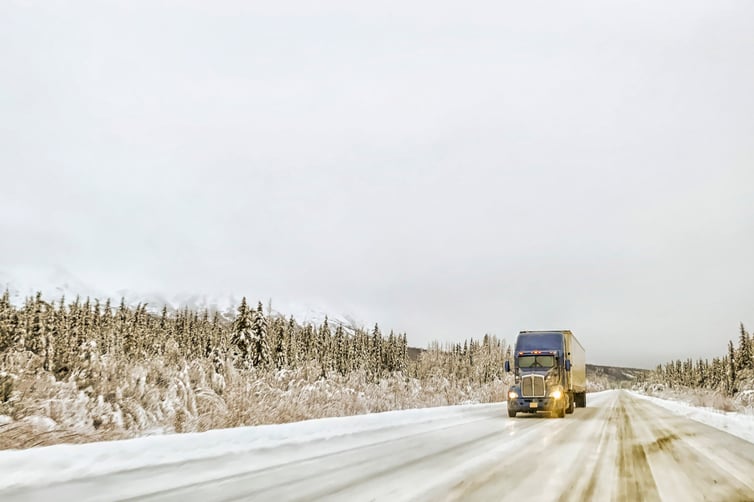
Winter driving can be dangerous. The possibility of losing control of one’s vehicle and the need to drive defensively to protect against other drivers requires alertness and readiness to react to hazards. Read the information below, and ask yourself how you can improve your driving style in any of the hazard categories.
Recognize the Hazards
Environment
Lanes may narrow due to snow accumulation while road surfaces can become slippery from freezing rain, ice, sand, or ice melt. Sun glare, blowing snow, and fog and ice on windows also reduce visibility in winter.
Equipment
Insufficient tread depth on tires or brakes that are out of adjustment reduces the ability to stop the truck safely. An inoperable window defroster or ice on the mirrors affects visibility.
Personal behaviors
Driving too fast or using cruise control in adverse road conditions increases the risk of a jackknife or losing control of the vehicle. Driving while ill or fatigued or not wearing cold weather clothing can be distracting.
Know the Defense
Vehicle Inspections
Ensure window defrosters and the heater work properly. Check tires for proper tread depth. Clean snow and ice off the tractor and trailer during stops, especially on the lights, turn signals, and reflectors.
Avoid Distractions
Do not drive if taking any medication that can cause drowsiness. Get plenty of rest, stay hydrated, and avoid heavy meals to reduce fatigue. Wear sunglasses and use the visor to reduce sun glare.
Observe Proper Speed for Condition
In adverse conditions, reduce speed by at least 2-3 mph below the flow of traffic, not to exceed the posted speed limit. Make accelerations gradually. Before entering ramps, curves, and turns, reduce speed by at least 10-15 mph below the posted speed limit or more based on conditions to avoid a rollover.
React Properly to Hazards
Do not use the engine brake or cruise control in slippery conditions. Be cautious of ice on bridges and pavement that looks wet but could be black ice. If driving conditions worsen, find a safe location to pull over and wait.
Maintain Proper Following Distance
Keep a minimum of six seconds behind the vehicle in front, but add one second more for each additional hazard that is present, like snow, freezing rain, sun glare, or black ice.
Note: These lists are not intended to be all-inclusive.
This material is intended to be a broad overview of the subject matter and is provided for informational purposes only. Great West Casualty Company does not provide legal advice to its insureds or other parties, nor does it advise insureds or other parties on employment-related issues, therefore the subject matter is not intended to serve as legal or employment advice for any issue(s) that may arise in the operations of its insureds or other parties. Legal advice should always be sought from legal counsel. Great West Casualty Company shall have neither liability nor responsibility to any person or entity with respect to any loss, action, or inaction alleged to be caused directly or indirectly as a result of the information contained herein.Reprinted with permission from Great West Casualty Company.

